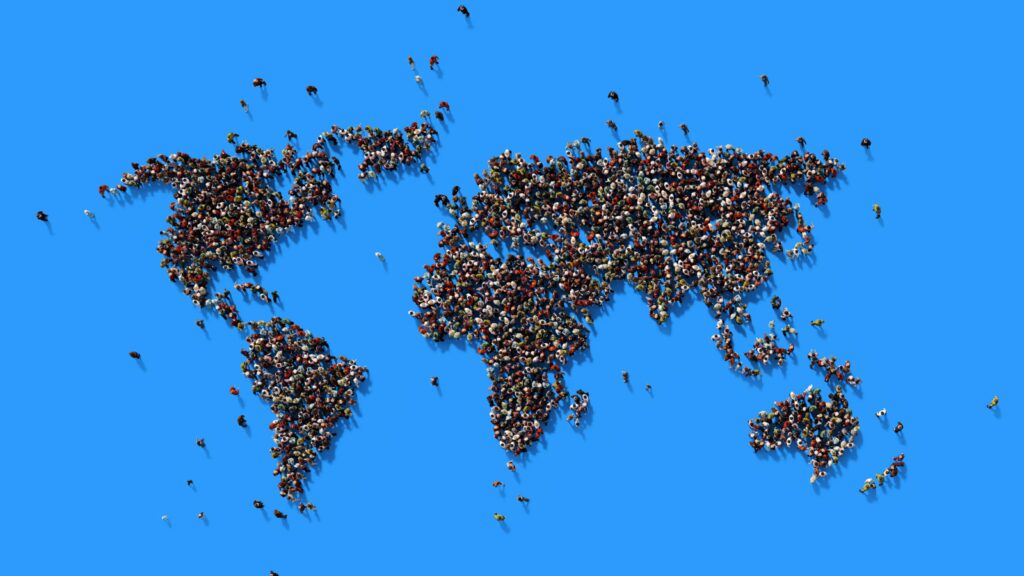As the world focuses on #COP27 (which begins today!), what better time to hold these conversations and see what does it mean for the planet.
As world leaders assemble for the United Nations climate change conference (COP27) in Egypt, it’s hard to be optimistic the talks will generate any radical departure from the fact that world set tor each 8 billion people in the coming days.
RELEVANT SUSTAINABLE GOALS



Demographic Milestones : both fascinating and horrifying to watch
The United Nations estimated on Monday that the world’s population will reach 8 billion on Nov. 15 and that India will replace China as the world’s most populous nation next year. Reaching this milestone is both a cause for celebration and a clarion call for humanity to find solutions to the challenges we face.
The challenges facing humanity are acute: generation-defining issues such as climate change, conflict and COVID-19 are disproportionately affecting the most marginalized and vulnerable among us. To date, millions continue to live in poverty or suffer from hunger and malnutrition. Most do not have access to healthcare and social protection, and are unable to complete quality primary and secondary education. Women around the world are still denied the fundamental right to make decisions about their bodies and futures, and we are seeing a worrying roll-back of progress on women’s rights in many countries.
Despite these challenges, the story behind 8 billion and how we got there is a story of triumph. We have reduced poverty and achieved remarkable advancements in healthcare. There are more of us humans than ever before due, in part, to increasing life expectancy and declining infant and maternal mortality.
Inexorable Rise Global Carbon Emissions Over The Past Two Centuries
AGreenhouse gas emissions from human activities are the main driver of this warming How much of the warming since 1850 can be attributed to human emissions? Almost all of it. The Intergovernmental Panel on Climate Change (IPCC) states clearly in its AR5 assessment report4:
“Anthropogenic greenhouse gas emissions have increased since the pre-industrial era, driven largely by economic and population growth, and are now higher than ever. This has led to atmospheric concentrations of carbon dioxide, methane and nitrous oxide that are unprecedented in at least the last 800,000 years. Their effects, together with those of other anthropogenic drivers, have been detected throughout the climate system and are extremely likely to have been the dominant cause of the observed warming since the mid-20th century.“
Structural Inequality : Health and environmental complications
The birth rate varies from country to country, with some growing fast and others shrinking. But underlying these trends, whichever way they point, is a widespread lack of choice. Sadly, discrimination, poverty, and crises, as well as coercive policies that violate women and girls’ reproductive rights, make it impossible for so many people to access contraception or sex education.
Globally, we face serious challenges, including the mounting impacts of climate change, ongoing conflicts and forced displacement. We need resilient countries and communities to meet them. And that means investing in people and making our societies inclusive, so that everyone is afforded a quality of life that allows them to thrive in our changing world.
To build demographic resilience, we need to invest in better infrastructure, education and health care, and ensure access to sexual and reproductive health and rights. We need to systematically remove the barriers – based on gender, race, disability, sexual orientation or migration status – that prevent people from accessing the services and opportunities they deserve to thrive.
Our economic growth and development models have led to overconsumption, violence, exploitation, environmental degradation, and climate change. The poorest countries – which didn’t create these problems, but still suffer their impacts – need resources to build resilience and well-being for their growing populations.
We need to understand and anticipate demographic trends, so that governments can make informed policies and resource allocations to equip their populations with the right skills, tools and opportunities.
You may also be interested in :
The Emissions Gap Report 2022 : Climate Crisis Calls for Rapid Societal Transformation


